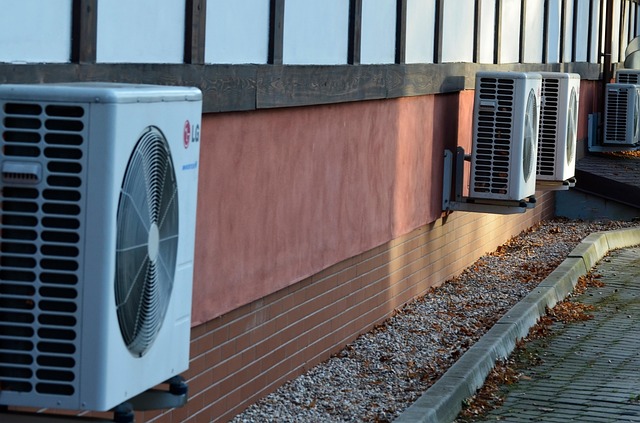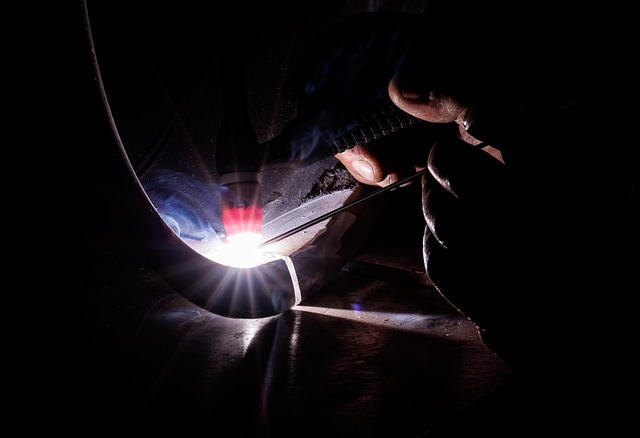Heater thermostat issues range from simple fixes to complex problems needing professional attention. Common problems include faulty controls, inaccurate temperature readings, and erratic heating patterns, often caused by worn components or wiring. Repairing a broken thermostat involves considering parts and labor costs, which vary based on model type. DIY repairs are possible for minor tasks but complex issues like heat pump condensing unit repairs require specialized knowledge. Regular maintenance, including cleaning, battery replacement, and seasonal servicing, is crucial to extend the lifespan of heating controls and prevent costly breakdowns.
“Heating controls repair is a common home maintenance concern, especially during chilly months. If your heater thermostat is broken, it can leave you shivering. This article guides you through understanding typical issues, estimating repair costs for both parts and labor, and deciding between DIY or professional thermostat repair. We also offer preventive tips to ensure your heating control system lasts longer, saving you money in the long run.”
- Understanding Common Heater Thermostat Issues
- Estimating Repair Costs: Parts and Labor
- DIY vs Professional Thermostat Repair
- Preventive Maintenance Tips for Longevity
Understanding Common Heater Thermostat Issues

Heater thermostat issues can range from simple problems that are easily fixable to complex malfunctions requiring professional attention. Common problems include faulty heating controls, such as a broken dial or display, inaccurate temperature readings, and erratic heating patterns. These issues could be due to worn-out components like the electric heating element repair or problematic wiring in the thermostat’s control panel.
Understanding these common heater thermostat issues is essential when considering DIY repairs or seeking water heater repair services. For instance, if your heater is not turning on at all, it might be a faulty thermostat that needs replacement rather than an entirely new system. Referring to a thermostat wiring diagram can also help in diagnosing and repairing problems, especially for those with more technical expertise.
Estimating Repair Costs: Parts and Labor

When estimating the cost of repairing a broken heater thermostat, it’s important to consider both parts and labor. The price of replacement parts for heating controls repair can vary widely depending on the model and brand of your thermostat. Basic models might cost as little as $20-$30, while smart or programmable thermostats could range from $50 to several hundred dollars. Additionally, there may be extra costs associated with specialized tools required for installation, especially if you need a radiator bleed kit for any subsequent system adjustments.
Labor charges typically represent the bulk of repair expenses and can differ based on factors like the complexity of the fix, your location, and the technician’s rates. A simple thermostat replacement might cost $50-$100 for labor, whereas more intricate repairs or installations could run up to $200 or more. Always obtain a thorough thermostat compatibility checklist from your HVAC professional to ensure accurate pricing, avoid unnecessary costs, and guarantee a successful fix for your heating system.
DIY vs Professional Thermostat Repair

Many homeowners wonder whether it’s better to tackle thermostat repairs themselves or call in a professional. For minor issues with your heating controls repair, such as replacing a battery or resetting settings, DIY can be a cost-effective and satisfying solution. Online tutorials and guides are readily available, making these tasks more accessible than ever.
However, complex problems with the heating control panel repair, especially those involving ac unit heating issues or heat pump condensing unit repair, may require specialized knowledge and tools. Professional technicians have the expertise to diagnose accurate issues, regardless of how subtle they may be. They also come equipped with high-quality parts, ensuring long-lasting repairs that can save you money in the long run by preventing future breakdowns.
Preventive Maintenance Tips for Longevity

Regular maintenance is key to extending the lifespan of your heating controls and avoiding costly repairs. Here are some preventive measures to keep your heater thermostat in top condition:
Firstly, ensure regular cleaning of the thermostat to prevent dust buildup, which can interfere with its accuracy. A quick wipe down with a damp cloth will do the trick. Additionally, checking and replacing the batteries at least once a year is essential. Many thermostats have backup battery compartments that often go unnoticed; keeping these fresh ensures your heating control panel repair needs are minimized. Lastly, consider seasonal servicing by a professional to inspect for any issues and perform any necessary adjustments or thermostat calibration instructions. Regular care will contribute significantly to the longevity of your heater.
Repairing a broken heater thermostat can vary greatly in cost, from a relatively inexpensive DIY project to a more substantial professional repair. Understanding common issues and estimating repair costs, including parts and labor, is essential for homeowners. While some may opt to tackle the problem themselves, considering preventive maintenance tips can significantly extend the lifespan of your heating controls, potentially saving money in the long run. Whether choosing a DIY approach or enlisting a professional, being informed about thermostat repairs empowers you to make informed decisions tailored to your budget and comfort needs.
